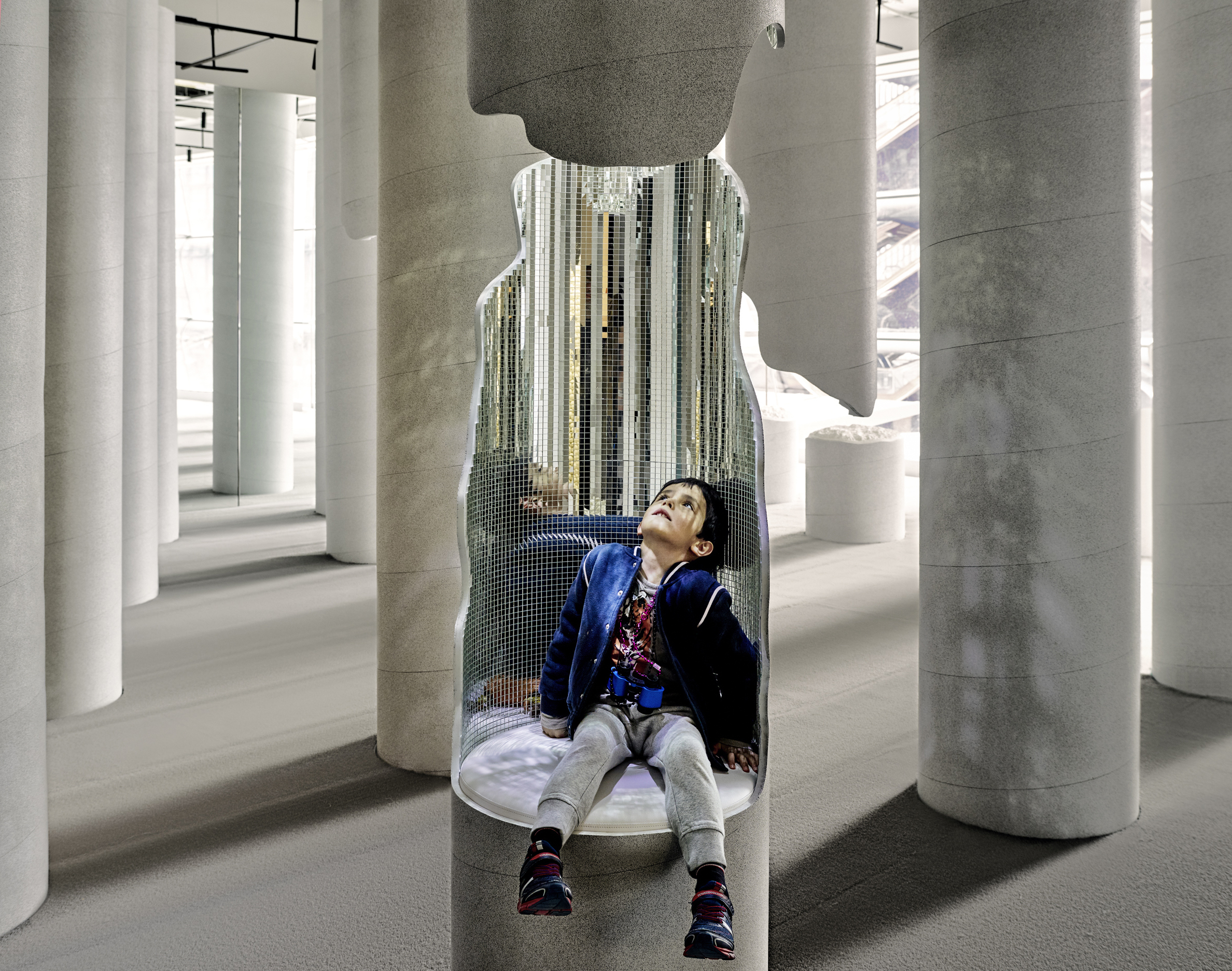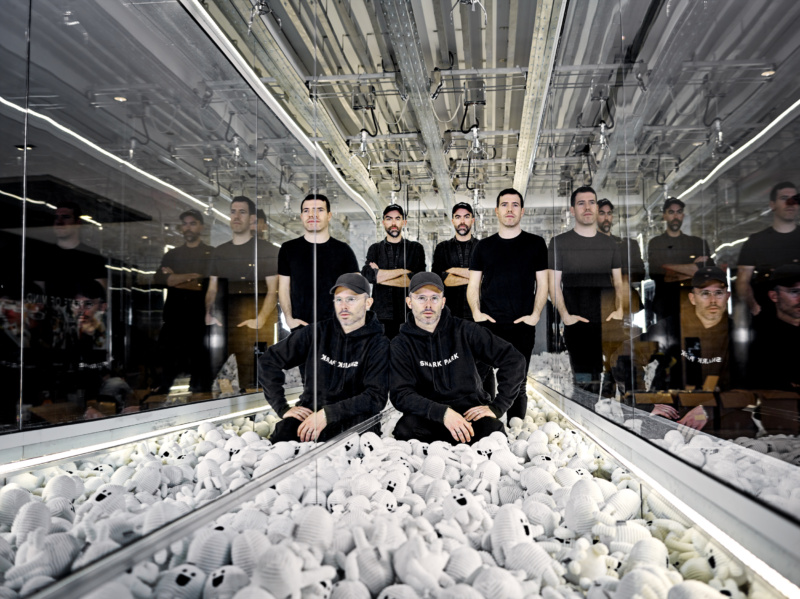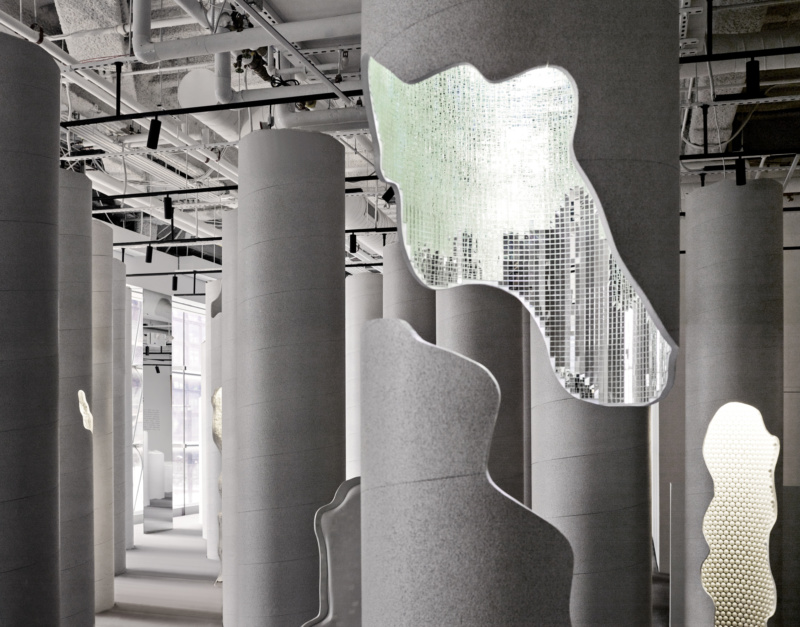
On March 15, Snark Park—a venue for large-scale immersive installations and design environments, located at New York's Hudson Yards—opened to the public. The space is the first permanent exhibition space for Snarkitecture, the design studio led by Daniel Arsham, Alex Mustonen, and Ben Porto; with three exhibitions a year, some paired with specific “retail experiences” and design objects, Snark Park is meant to provide what its name might imply: an open space for visitors to explore, play, and touch the art, engaging with its architecture experientially.
It is, of course, another in a long line of Instagrammable museums and art spaces; Snarkitecture’s The Beach (2015) might’ve been one of the first. But the creative impetus for Snark Park isn’t rooted simply in how social media-friendly it is (sort of); Arsham has long had a unique fetish for abstracted versions of objects and space, and Snarkitecture was already dreaming of a permanent venue for their installations long ago. Below, we discuss with Arsham Snark Park’s origins and the significance of experiential, accessible design.
You’ve been thinking about Snark Park way before the proliferation of Instagram museums, as Ben Porto explained at Artnet. What was the impetus for Snark Park—its creative starting point, so to speak? More than anything, our installations try to create new spatial experiences for people, things that they may be familiar with in some fashion, but are presented in a new context. Our work has always engaged our audience in taking photos—both of the spaces and of themselves within it—and that was a concept even before social media was around. I would say it was a byproduct of that, rather than the other way around.

It's worth reiterating: why is it important to make design experiential? Why is accessibility important?Snark Park began as an extension of many of the installation-based projects that we’ve done in the past—where we were creating an experience for people. Based on the success of The Beach, we decided to create a new space that would be ours to control and ours to curate. In cases where we’ve brought our work to museums or galleries, we can control most things, but with Snark Park we’re able to control everything from the sound to the scent of the space to the texture of the floor—the experience of what you see when you’re waiting in line, all of the merch in the shop, everything.
Both within my own work and within Snarkitecture, we often employ scenarios, objects, textures and materials that people know but are presented with in an unfamiliar context. That combination of the familiar and the unknown, or unfamiliar, is something that creates a unique experience for people.
How does play factor into your own creative practice? Perhaps through trial and error, or really getting to the heart of objects by depicting them visually. In terms of “play,” we always look at the way that children interact with architecture. They misuse it, they misrecognize it—for example, the way a child might slide down a banister instead of using it as a support to climb down a set of stairs. We want to engage some of that spatial play within our own work.

How do you imagine people will respond to Lost and Found, Snark Park's first exhibition?Because of the way it’s structured, the space feels quite simple at first. As you begin to move through the environment, it becomes more complex—you’re presented with a series of different scenarios that reveal new viewpoints that continuously grow and expand. The programming will change every 3-4 months. The first installation will be on view a little bit longer, because it opens in March 2019 and changing the project over in the middle of the summer doesn’t make sense, so we’ll probably switch to the next installation in September 2019.
Are you at liberty to discuss what will come after Lost and Found? How often will the programming change? Not at this stage, but more information to come soon! Snark Park will debut three new exhibitions each year.



